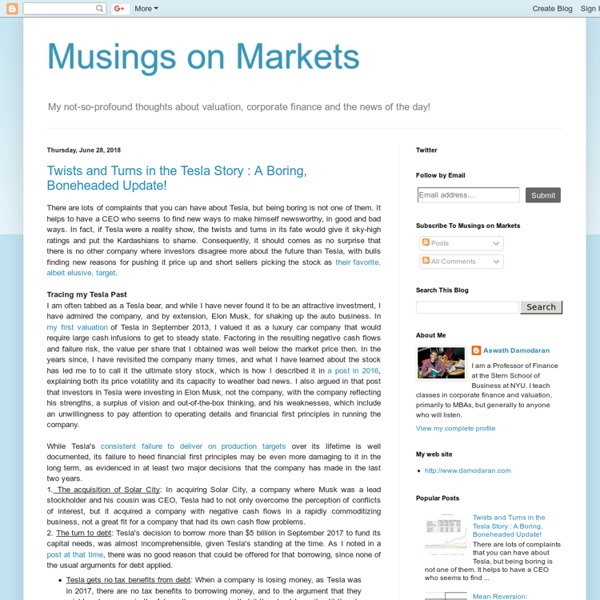



This is How Buffett Interprets Financial Statements What You Will Learn The importance of understanding and interpreting accounting for building wealthHow Buffett interprets each of the financial statements and how you can too Warren Buffett is one of a kind and while he provides amazing insight and knowledge year after year in his letters and speeches, details about how to choose companies and what to look for is lacking. Warren Buffett and the Interpretation of Financial Statements is a book that manages to explain how Buffett interprets financial statements which we will go through. Click a button to download a PDF of this post now How Warren Buffett Interprets the Income Statement When it comes to analyzing the income statement, it is important to investigate further and drill down to detect what the quality of earnings are made up of and what the numbers interpret. Gross Profit Margin: firms with excellent long term economics tend to have consistently higher margins Sales Goods and Administration: Consistency is key. Net Earnings Inventory
Société Française des Evaluateurs Aswath Damodaran: Valuation, Books, Blog, Articles, Videos “A brand name is one of those competitive advantages you can hang on to for a long time.” — Aswath Damodaran Get the entire 10-part series on Warren Buffett in PDF. Save it to your desktop, read it on your tablet, or email to your colleagues Q1 2020 hedge fund letters, conferences and more Aswath Damodaran: Background & bio Aswath Damodaran is the Professor of Finance at the Stern School of Business at New York University. Aswath Damodaran had a spate teaching at the University of California, Berkeley, from 1984 to 1986, where he received the Earl Cheit Outstanding Teaching Award in 1985. Aswath has published research papers in the Journal of Financial and Quantitative Analysis, the Journal of Finance, the Journal of Financial Economics and the Review of Financial Studies. Aswath Damodaran: Blog Musings on Markets Not-so-profound thoughts about valuation, corporate finance and the news of the day! Tools Taken from Aswath Damodaran’s website: Damodaran Online Spreadsheets Webcasts Mr. Papers
EASY Ways to Invest in India Macrofugue Analytics | The contrapunctus of capital. /ˈmakrō/: pertaining to macroeconomics /fyo͞og/: composition which overlays separate melodies into one theme le blog de Jean-Florent Rérolle Spreadsheet programs With time, the number of spreadsheets on this page has also increased. To help you in finding the spreadsheet that you might want, I have categorized the spreadsheets into the following groups: Corporate finance spreadsheets: These spreadsheets are most useful if you are interested in conventional corporate financial analysis. It includes spreadsheets to analyze a project's cashflows and viability, a company's risk profile, its optimal capital structure and debt type, andwhether it is paying out what it can afford to in dividends. These spreadsheet programs are in Excel and are not copy protected. One more point.
What's Wrong with This Picture: Kodak's 30-year Slide into Bankruptcy As Eastman Kodak begins to adapt to the challenges of bankruptcy, David A. Glocker’s company, Isoflux, is expanding — thanks to technology he developed in Kodak’s research labs. He didn’t steal anything. In fact, before he founded Isoflux with Kodak’s blessing in 1993, Glocker approached his managers at the company and suggested they market the coating process he had developed. “In a nutshell, I went to them and said, ‘I think this is valuable technology and it’s not being commercialized…. I’d like to do that if Kodak is not interested,’” he recalls. The technology is one of countless innovations that Kodak developed over the years but failed to successfully commercialize, the most famous being the digital camera, invented by Kodak engineer Steven Sasson in 1975. When new technologies change the world, some companies are caught off-guard. It wasn’t always this way. Many say film’s profitability contributed to Kodak’s demise. Creating and Capturing Value Refocusing the Company
The Reformed Broker Kenneth R. French - Data Library Because of changes in the treatment of deferred taxes described in FASB 109, files produced after August 2016 no longer add Deferred Taxes and Investment Tax Credit to BE for fiscal years ending in 1993 or later. U.S. Research Returns Data (Downloadable Files) Univariate sorts on Size, B/M, OP, and Inv Portfolios Formed on Size TXT CSV Details Portfolios Formed on Size [ex.Dividends] TXT CSV Details Portfolios Formed on Size [Daily] TXT CSV Details Portfolios Formed on Book-to-Market TXT CSV Details Portfolios Formed on Book-to-Market [ex. Portfolios Formed on Operating Profitability TXT CSV Details Portfolios Formed on Operating Profitability [ex. Portfolios Formed on Investment TXT CSV Details Portfolios Formed on Investment [ex. Bivariate sorts on Size, B/M, OP, and Inv 6 Portfolios Formed on Size and Book-to-Market (2 x 3) TXT CSV Details 6 Portfolios Formed on Size and Book-to-Market (2 x 3) [ex. Three-way sorts on Size, B/M, OP, and Inv Univariate sorts on E/P, CF/P, and D/P U.S.
Find gift ideas handpicked from online portals in India | giveter.com India TheMoneyIllusion Overview of Financial Modeling - What is Financial Modeling What is a financial model? A financial model is simply a tool that’s built in Excel to forecast a business’ financial performance into the future. The forecast is typically based on the company’s historical performance and requires preparing an income statement, balance sheet, cash flow statement and supporting schedules (known as a 3 statement model). From there, more advanced types of models can be built such as discounted cash flow analysis (DCF model), leveraged-buyout, mergers and acquisitions, and sensitivity analysis. What is a financial model used for? The output of a financial model is used for decision making and performing financial analysis, whether inside or outside of the company. Who builds financial models? There are many different types of professionals that build financial models. To learn more about jobs and careers that require building financial models, explore our interactive career map. How can you learn financial modeling? What are financial modeling best practices?